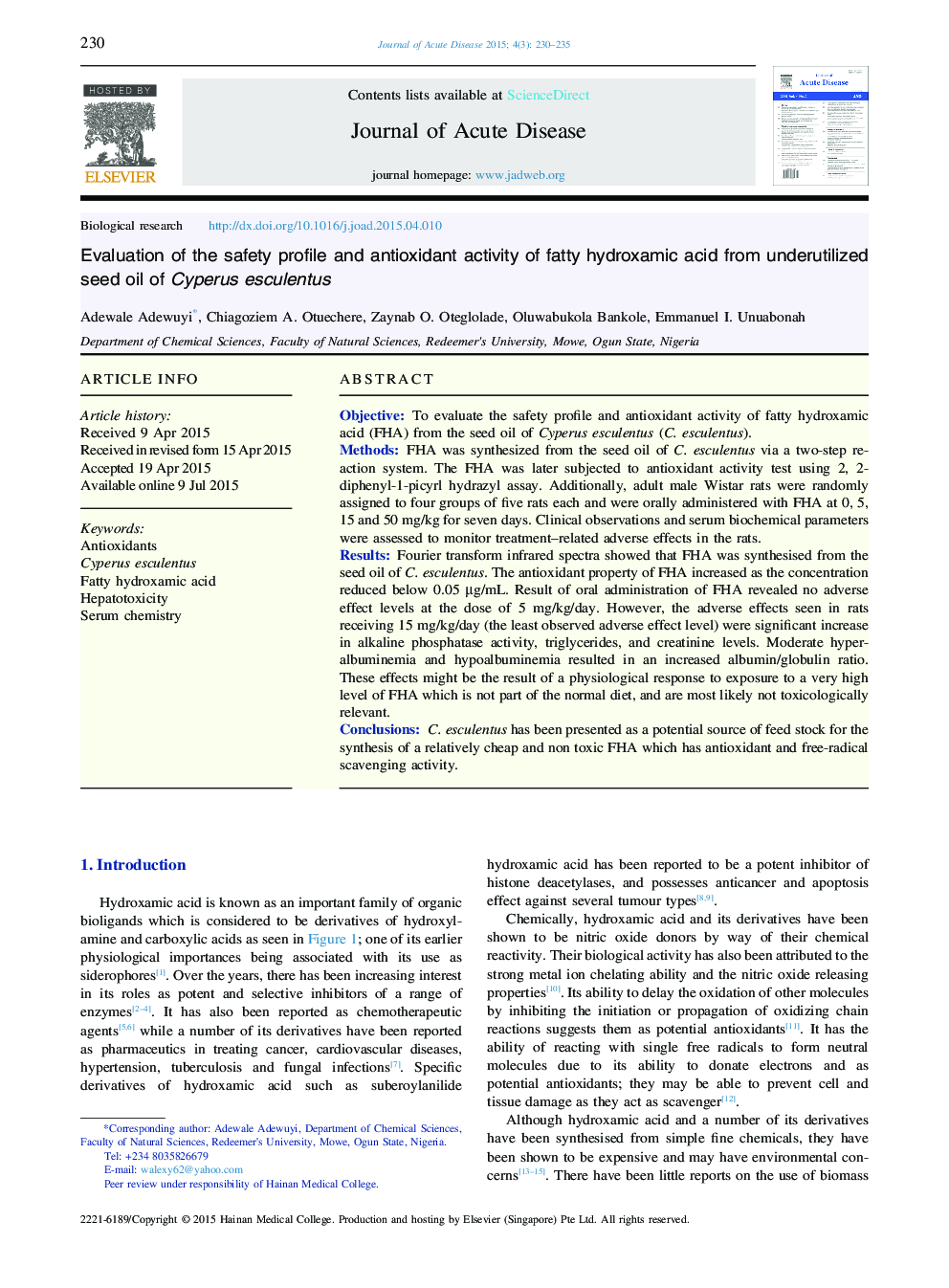| Article ID | Journal | Published Year | Pages | File Type |
|---|---|---|---|---|
| 3475189 | Journal of Acute Disease | 2015 | 6 Pages |
ObjectiveTo evaluate the safety profile and antioxidant activity of fatty hydroxamic acid (FHA) from the seed oil of Cyperus esculentus (C. esculentus).MethodsFHA was synthesized from the seed oil of C. esculentus via a two-step reaction system. The FHA was later subjected to antioxidant activity test using 2, 2-diphenyl-1-picyrl hydrazyl assay. Additionally, adult male Wistar rats were randomly assigned to four groups of five rats each and were orally administered with FHA at 0, 5, 15 and 50 mg/kg for seven days. Clinical observations and serum biochemical parameters were assessed to monitor treatment–related adverse effects in the rats.ResultsFourier transform infrared spectra showed that FHA was synthesised from the seed oil of C. esculentus. The antioxidant property of FHA increased as the concentration reduced below 0.05 μg/mL. Result of oral administration of FHA revealed no adverse effect levels at the dose of 5 mg/kg/day. However, the adverse effects seen in rats receiving 15 mg/kg/day (the least observed adverse effect level) were significant increase in alkaline phosphatase activity, triglycerides, and creatinine levels. Moderate hyperalbuminemia and hypoalbuminemia resulted in an increased albumin/globulin ratio. These effects might be the result of a physiological response to exposure to a very high level of FHA which is not part of the normal diet, and are most likely not toxicologically relevant.ConclusionsC. esculentus has been presented as a potential source of feed stock for the synthesis of a relatively cheap and non toxic FHA which has antioxidant and free-radical scavenging activity.
